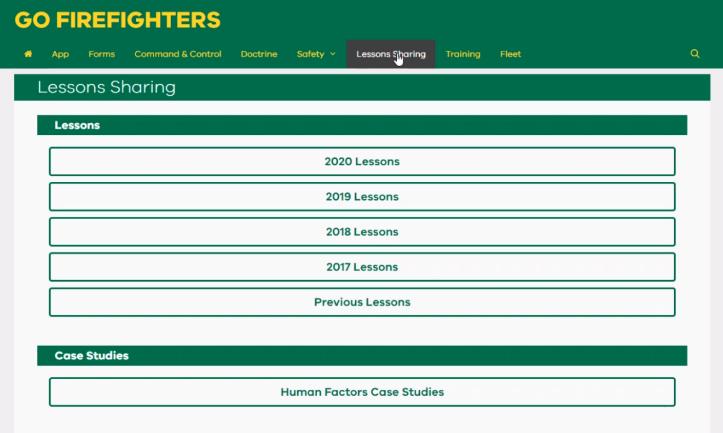
7 minute read
2 Implementation monitoring of IGEM recommendations
This chapter provides an update on the implementation progress of two recommendations reported as ongoing and one new recommendation made in IGEM’s Summary of investigations into Department of Environment, Land, Water and Planning breaches of planned burn control lines 2018–19 (2018–19 summary report). In assessing the implementation progress of each recommendation, IGEM uses the descriptions outlined in Table 2 to define the status of each recommendation.
Implementation status
STATUS DESCRIPTION
Complete Recommendation has been implemented.
Ongoing
Closed Recommendation is in progress and will continue to be monitored by IGEM.
Recommendation has not been implemented.
RECOMMENDATION 2 – IGEM 2016–17 SUMMARY REPORT
The Inspector-General for Emergency Management recommends that the Department of Environment, Land, Water and Planning (DELWP) continues the delivery of its training program for its staff involved in planned burning activities that covers the correct interpretation and application of risk and risk assessment values when applying the Planned Burn Risk Assessment Tool (PBRAT) to proposed burning activities. Such a program will assist DELWP to ensure it consistently applies its risk assessment process. As part of this program, the PBRAT process would benefit from the creation of aides and examples to assist staff in applying risk assessment values against individual criteria of the PBRAT.
Lead agency DELWP
Status Complete
In its 2016–17 summary report, IGEM found that in all but one of the planned burns that breached control lines during 2016–17, DELWP paperwork and approvals included some inaccurate entries, omissions or quality oversights. IGEM further noted that these issues were confined to DELWP's completion of Planned Burn Risk Assessment Tool (PBRAT) checklists and approval forms. IGEM assessed this recommendation to be ongoing in its 2018–19 assurance report. In 2018 DELWP emphasised the importance of its peer review process, which forms part of the PBRAT approval process. DELWP advised IGEM that it would further consider various quality assurance as part of Safer Together Project 2.8 – Quality Assurance Systems for Fuel Management, however this project has since closed. Safer Together is a lapsing program with funding ending in June 2021, and no significant projects approved beyond July 2020. However, in 2019 DELWP transitioned to an electronic PBRAT (ePBRAT) with its use being made mandatory during the 2019–20 planned burning season. In transitioning the risk assessment process to a live electronic platform, DELWP introduced additional validations (to remove opportunities for administrative errors), and also replaced scoring systems with the ability for free text to describe the unique attributes of each burn. DELWP has produced guidance documents to assist staff in their use of the ePBRAT, which includes detailed notes on how to access and fill out the electronic form, interpretation of information between the original PBRAT and the new ePBRAT, and examples of a completed form. DELWP continues to make further improvements to its risk assessment process, and is currently developing an embedded risk assessment (ERA) approach. The ERA is aligned with ISO 31000 – Risk Management principles, and uses simple language to ensure that its concepts are accessible to all users. DELWP will be deploying ERA within its Fuel Management System (FMS). DELWP has delivered a series of webinars to introduce its ERA approach, targeted at staff across Forest Fire Management Victoria (FFMVic) and the Country Fire Authority (CFA). The webinars also reaffirmed existing processes and provide staff the opportunity to build their understanding of modern risk assessment.
As it continues to develop ERA, DELWP plans to deliver workshops to further guide staff, and release further ERA components into the FMS. ERA is scheduled for full release into the FMS by the end of June 2021.
Finding
IGEM considers that this recommendation has been implemented.
RECOMMENDATION 3 – IGEM 2016–17 SUMMARY REPORT
The Inspector-General for Emergency Management recommends that the Department of Environment, Land, Water and Planning (DELWP) in consultation with the regions and relevant personnel, revise its procedure for planned burn contingency planning. This review should aim to provide a clear, and consistent, set of minimum standards (and examples) to guide DELWP’s staff in how to develop adequate contingency plans for planned burning activities.
Lead agency DELWP
Status Ongoing
In its 2016–17 summary report, IGEM found inconsistencies in the contingency planning among planned burns that breached their control line. IGEM noted that DELWP did not provide planning staff with adequate guidance and instruction on the minimum requirements for a sufficiently rigorous contingency plan to manage a breach of control line. As part of IGEM's 2018–19 assurance report, DELWP advised that actions to address this recommendation fell within Safer Together Project 2.6 – Common Burn Risk Assessment Tool, with implementation scheduled through 2019–20. As part of its project implementation, DELWP was considering how contingency planning can be most effectively embedded as part of a holistic risk assessment and mitigation-identification process. DELWP advised that contingency planning will be built into its new ERA, and enhancements to eMap mapping products. DELWP further advised that contingencies will be recorded against desired and undesired outcomes, including the breach of a control line. While it did not provide examples of these new products or enhancements, DEWLP indicated that implementation within the FMS and availability for use by FFMVic practitioners is planned for 2021.
Finding
IGEM considers that this recommendation is progressing and will continue to monitor its implementation.
RECOMMENDATION 1 – IGEM 2018–19 SUMMARY REPORT
The Inspector-General for Emergency Management recommends that the Department of Environment, Land, Water and Planning review literature and contemporary research projects to assist its understanding of the extent of landscape dryness and its effect on fuel availability. Information collected should be shared with decision makers to increase their understanding of fire behaviour during the conduct and control of planned burns in periods of prolonged landscape dryness.
Lead agency DELWP
Status Ongoing
In its 2018–19 assurance report, IGEM analysed three planned burns that breached their control line. All three breaches originated from planned regeneration burns. IGEM found that DELWP had followed its own processes in developing and approving plans for each of the three planned burns. Further, IGEM did not identify issues associated with DELWP's processes in planning, approval, or conduct of the burns. However, IGEM found that DELWP did not fully consider some unique elements of each planned burn. For each of the three planned burns that breached their control line, control strategies were reliant on fuel moisture differential which is commonly the preferred option for regeneration burns. IGEM's analysis found that all three breaches highlighted the link between prolonged dryness and unpredictable weather in the period two-to-10 days post-ignition, which then influences the drying cycle and therefore moisture content.
Each planned burn experienced persistence of fire within the contingency area due to the effect of prolonged seasonal dryness, albeit in slightly differing ways. Senior FFMVic staff made predictions in relation to the effect of the drying cycle however the extent and duration of the drying cycles that occurred post-ignition were beyond the forecasts available at the time. Despite DELWP following its own processes and using the best information available at the time, some unique elements of these planned burns rendered specific control strategies within contingency plans operationally ineffective when executed. For this reason, IGEM made one recommendation to assist decision-makers and increase their understanding of fire behaviour during the conduct and control of planned burns in periods of prolonged landscape dryness. DELWP advised IGEM that it is very aware of the limitations of current soil moisture deficit indicators and is working to improve its understanding. DELWP is also working on various projects and participating in national research programs, that aim to develop a more suitable measurement system. IGEM considers this participation highly valuable in providing DELWP the opportunity to test the efficacy of any new measures in relation to its delivery of planned burning programs. DELWP considers the development of better-suited measures of soil moisture deficit, and their integration into planned burning delivery programs to be vital in assisting their understanding of fire behaviour during periods of prolonged dryness. DELWP has advised that it plans to implement new elements through support tools such as Foresight – an online bushfire risk visualisation tool – and fire behaviour models.
In the interim, DELWP has produced lessons documents which can currently be accessed via a Lessons Sharing page on the GO Firefighters website and application (see below). These can be accessed by all staff involved in planned burn planning and delivery.
DELWP GO Firefighters – Lesson Sharing application

Source: GO Firefighters
IGEM considers this recommendation will be complete once DELWP has undertaken its review of literature and contemporary research projects, and shared this information with decision-makers to increase their understanding.
Finding
IGEM considers that this recommendation is progressing and will continue to monitor its implementation.


